 Murder Rooms
Murder Rooms
Inspired by the life and works of Sir Arthur Conan Doyle
Release Date: 2000-2001
Starring: Ian Richardson, Charles Edwards, Simon Chandler, Mossie Smith, Malcolm Sinclair, Dermot Crowley, Sean Wightman, Caroline Carver, Beatie Edney, Ben Macleod, Robin Laing, Claire Harman, Dolly Wells, Alexander Armstrong, Crispin Bonham-Carter, Rik Mayall, Charles Dance, Annette Crosbie, Paul McNeilly, Anton Lesser, John Sessions, Ronald Pickup, Nick Haverson, Roger Lloyd Pack, Ian McNeice, Clare Holman, Warwick Davis, Matthew Macfadyen, David Hayman, Ruth Platt, and Henry Ian Cusick
Rating: ★★★
To Buy
Arthur Conan Doyle has gotten his medical degree from Edinburgh and set up practice in Portsmouth. Though the patients aren't exactly beating down the doors; in fact the longevity of his practice is a source of concern to those who care for him. One outlet to fill his time is to write stories, many of which get published. Yet his greatest literary creation is yet to come, and he will be based on his close friend and mentor, Dr. Joesph Bell. Dr. Bell is still working up in Edinburgh, but he finds the time to journey south and visit his most favorite student as often as possible. It doesn't hurt matters that Conan Doyle has started to partake in one of Dr. Bell's favorite pastimes, amateur crime solving. The sleuthing starts innocently enough with Conan Doyle trying to help one of his patients. With the arrival of Dr. Bell they become a detecting duo, much like Sherlock Holmes and Watson will be in the future. And once the duo are known to the police, they are invited to help on other cases, especially in the morgue where they are short staffed and men with medical knowledge are needed. The two insinuate themselves into adventures concerning Spiritualism, Fenians, and even soldier's with PTSD. They connect with their cases on many levels, some of which are personal. But only one thing is certain, the origins of the greatest literary consulting detective of all times was anything but staid. The dark beginnings of Sherlock Holmes are as memorable as the great detective himself.
Murder Rooms had it's origins in the TV movie Dr. Bell and Mr. Doyle, an uneven production that scandalously underused Matthew Macfadyen, had ludicrous wigs, a Doyle that could be outwitted by even the dumbest of Watsons, the requisite doomed love affair, and a tendency to stop and laboriously draw the connection between the real Dr. Bell and his fictional counterpart Sherlock Holmes. But for all that it was a clever conceit, to take truth and spin it into the most famous of fictions. Because that's where the genius lies. This show, at it's core, is based on truth. Not many people realize that Sherlock Holmes didn't spring fully formed from the mind of Arthur Conan Doyle. He in fact had a very real counterpart in Doctor Joseph Bell. The future author was a medical student when he met Bell in 1877 when Conan Doyle served as a clerk in the Royal Infirmary of Edinburgh. Bell was known for his keen observational eye and often helped the police with their investigations. Bell inspired Conan Doyle with his unique methods and the man himself was in fact flattered to know that he was, however loosely, the impetus for the detective that seized the imagination of the reading public; unlike Holmes himself who rather frowned at Watson's endeavors. Bell even got some notoriety outside the realm of fiction as an an expert witness in the sensational Ardlamont Murder. And right there is the key to why this series worked, like the Ardlamont Murder, this series embellishing of reality gives the show real world stakes; it makes Murder Rooms feel more alive than the staid Victorian adventures of Holmes. By having the author and his inspiration with Conan Doyle playing Watson to Dr. Bell's Holmes, there's this feeling of truth, an immediacy that was never present in the stories despite how well they were written. The "truth" in the beginning matters for what came after.
Yet for how fun the series is it would never have worked if they hadn't been willing to see the mistakes in that initial TV movie and fix them. I wouldn't say it was precisely a reboot, more like how when Being Human went from pilot to series, they ditched what wasn't working, aka original Mitchell and Annie, but kept the plot as a through line. So we still have Doyle dealing with the death of Elspeth, only it's a Doyle who can actually act and an Elspeth you don't long to see dead. We still have Ian Richardson magnificently cast as Bell, he did play Holmes once dontcha know, only he no longer has that very disturbing Tom Jones wig. Seriously, the TV movie has some of the worst wig work I've ever seen, but Ian Richardson as Tom Jones is the most surreal. The revitalized show also brought in many great British actors, as in a rounded cast of awesomeness, not just, oh here's Charles Dance cause he'll appear in anything, he's totally not the villain just our red herring, oh look, he has red hair, haha. Instead we get the likes of Clare Holman from Lewis and David Hayman from The Paradise, Roger Lloyd Pack from The Vicar of Dibley, Dermot Crowley from Luther, and Ian McNeice from Doc Martin and Doctor Who, and Anton Lesser from everything British you've ever seen. But most surprising of all, Rik Mayall from The Young Ones and Bottom. And not surprising because he's in it, but surprising because of the depth of his acting. You will not believe the acting he is capable of if you've only seen the slapstick and surreal humor of his work with Adrian Edmondson. He is a talent who we lost too soon. It's actors like these that make Murder Rooms memorable. Despite it's unevenness, which is still there in spite of the rejiggering, it will stick with you.
The real success lies outside the casting in the fact that David Pirie was willing to step back from the blunt and ludicrously overt Sherlockian references in the original script and develop a more cunning narrative by drawing on the lives of Conan Doyle and Bell. They reflect and mirror images we have seen in the stories, like "The Adventure of the Solitary Cyclist" referenced in "The Patient's Eyes," but that is not where the mystery begins or ends. By taking this step back, for those who know a little about Conan Doyle's life, you get far more excitement working out the connections and also the foreshadowing of his life to come. The episode that excels the most in this regard is "The Photographer's Chair." By having a story that deals with Spiritualism and photography we get a glimpse into what will define Conan Doyle's later life. While he starts out as a skeptic at the beginning of the episode, you just know that it will soon turn to belief. In real life it was the deaths of many close to him that led him to take solace in Spiritualism. He defended his beliefs in word and deed. He even lost many friends over his unswerving convictions. But his second wife was a strong believer, she even claimed to be a medium. To see these facts as a burgeoning story dramatized on TV was just fascinating to me. Nothing is overt, it's all subtle. He participates in his first seance, he talks to the medium played by Clare Holman, and his convictions against a spirit realm are doubted. Could there be a world beyond? His doomed love affair of the TV movie also is used for the first time logically, giving him a reason to believe, versus creating a reason for a monastic existence like Holmes and a Moriarty like nemesis.
Though Conan Doyle's belief in Spiritualism also extended to other things beyond the ken of man, such as fairies. The Cottingley Fairies are infamous photographs for the fraud they perpetrated, but more so for the vocal support of Conan Doyle who was utterly taken in by the fakes. The reason they were able to stand up to scrutiny is that the girls didn't mess with the photographic process, they just took pictures of themselves with fairies they had made. Ten years ago I was lucky enough to get to see these originals, and you can almost see why Conan Doyle and others were taken in. They look real enough, but it's more because they wanted to believe. That is where the photography element comes into "The Photographer's Chair." Men and woman who have suffered grief are being killed in an attempt to capture their soul leaving their body. The villain is just trying to capture another aspect of the supernatural, such as the two girls did with the fairies, because he believes with the zealotry of a madman. To take that further, the killer expounds on frauds within Spiritualism, making sure that we know there is truth in the supernatural, but it's being corrupted by the scams. If you have an interest in the more odd Spiritualist frauds I suggest reading Mary Roach's Spook. But if you want a good mystery that tackles the possibility that this could be true or false, then please watch this episode. If you ever thought that Conan Doyle and his later beliefs were a little crazy, it makes you connect to him in a way you never thought you could. Oh, and the little photographic evidence at the end of the episode, it casts such possibilities that you're not quite sure what to believe.
And that's what it all comes down to in the end. Evidence. If that glass plate had survived, that might have been something... but evidence is what is needed for unassailable proof. And it's Dr. Bell's way of approaching evidence that is unique. He could literally be considered the beginning of the forensic sciences. He uses his observational skills to examine patients and come to conclusions about their health, or, if he's in the morgue, about their death. It is these observational techniques that Holmes uses in literature to examine all of life, not just the human body. It is just fascinating how forensic evidence can lead to analytical evidence which can lead to enlightenment. To take your doctoring skill set and apply it to crime solving. Of course in this day and age we take it for granted with all the various CSI offshoots that this is how crime solving was always done, but that isn't the case. Just as recent as the Regency period there wasn't even a police force as such, and if you have a desperate need to actually know more about that read P.D. James's Death Comes to Pemberley. So to have Dr. Bell going out and solving crimes in a way that is unheard of is revolutionary. Don't be jaded by all that has come after, or take anything for granted. Just because the popular image of detection comes from Sherlock Holmes shouldn't detract from "the beginning." It should enhance it! The subtitle for Murder Rooms is "The Dark Beginnings of Sherlock Holmes" but it really could be "The Dark Beginnings of Modern Detection." This might be nothing more than a TV show, but taken in the greater context of crime solving, it's a revolution.
 Welcome Home, Bernard Socks by Paul Magrs
Welcome Home, Bernard Socks by Paul Magrs Dead to the Last Drop by Cleo Coyle
Dead to the Last Drop by Cleo Coyle




















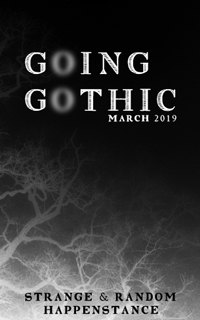
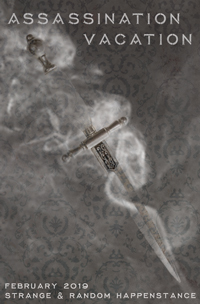
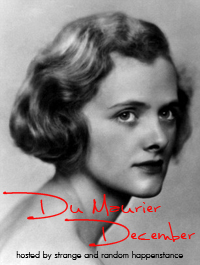

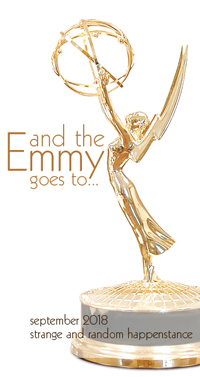




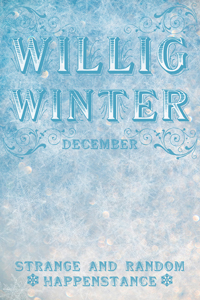

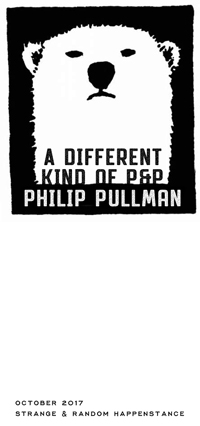


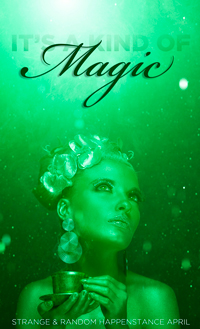
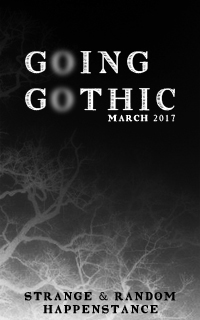

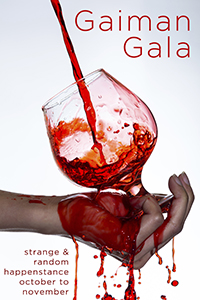
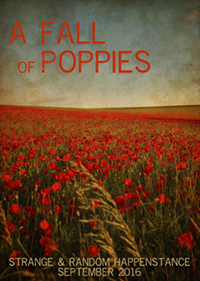



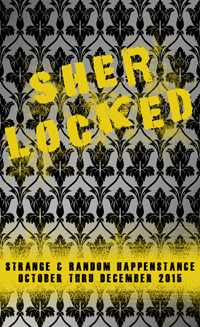







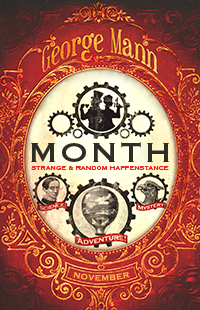






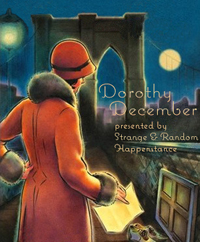


 The Dark Water by David Pirie
The Dark Water by David Pirie Felines of New York by Jim Tews
Felines of New York by Jim Tews Sherlock Holmes: The Novels by Sir Arthur Conan Doyle
Sherlock Holmes: The Novels by Sir Arthur Conan Doyle
 The Final Solution by Michael Chabon
The Final Solution by Michael Chabon Word Puppets by Mary Robinette Kowal
Word Puppets by Mary Robinette Kowal A Bride's Story Volume 7 by Kaoru Mori
A Bride's Story Volume 7 by Kaoru Mori
 The Case of the Baker Street Irregular by Robert Newman
The Case of the Baker Street Irregular by Robert Newman
 Basil of Baker Street by Eve Titus
Basil of Baker Street by Eve Titus


















